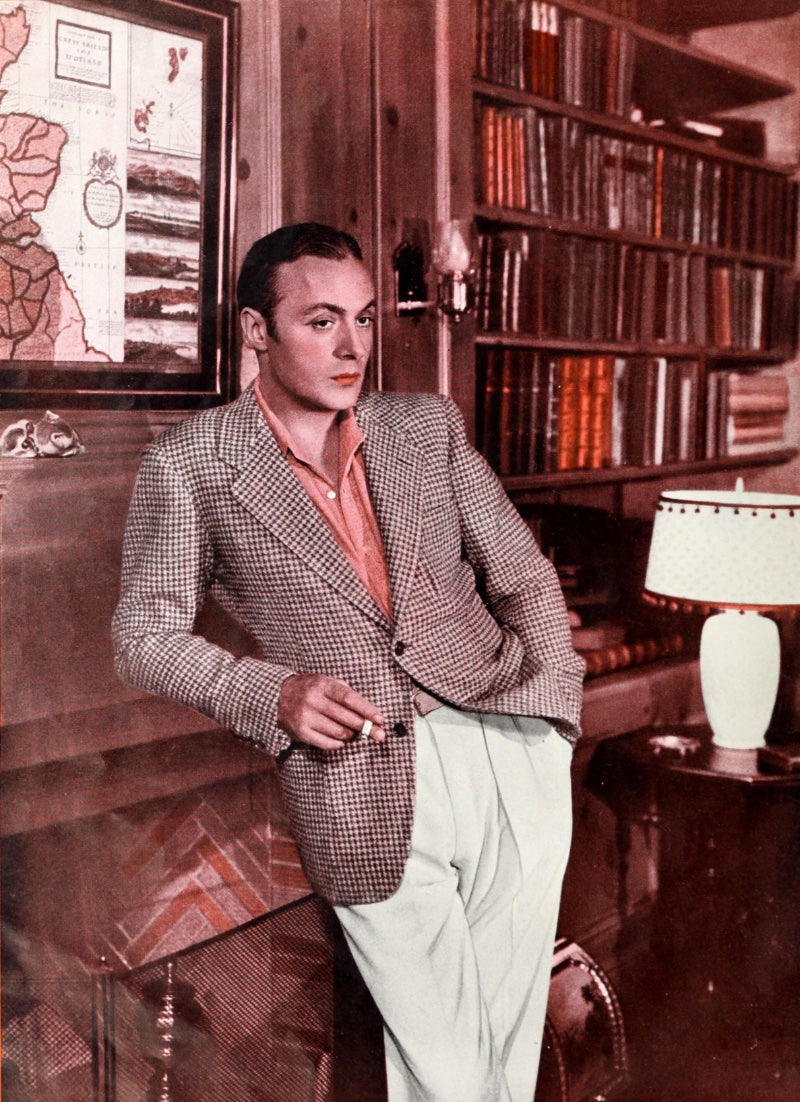
Written by Sonia Su
In the tumultuous landscape of the 1930s, amidst economic strife and social change, men's fashion emerged as a beacon of sophistication and resilience.
From the tailored suits of Wall Street executives to the rugged attire of working-class heroes, the clothing of this era encapsulated both style and practicality.
This article introduces the intricate details and enduring allure of 1930s men's fashion, uncovering the trends, influences, and timeless elegance that defined this pivotal period in history.

Source: The Met Digital Collections. Artist unknown (Italian). Menswear 1930s- Italian, Plate 011, 1934. New York: The Met, Costume Institute Fashion Plates. Gift of Woodman Thompson.
1930s as a Pivotal Period
The 1930s was a decade marked by significant historical events and social upheaval across the globe. In the aftermath of the Great Depression, which began with the Wall Street Crash of 1929, the world faced unprecedented economic challenges.
The United States implemented the New Deal under President Franklin D. Roosevelt, introducing sweeping reforms and government programs aimed at alleviating poverty and unemployment. To learn more about 1920s men's fashion, read our separate blog.

Source: "F. Scott Fitzgerald." Wikipedia, Wikimedia Foundation, 1 Apr. 2024.
Cultural and artistic movements flourished amidst the tumult of the 1930s, with the emergence of Art Deco design, jazz music, and the Golden Age of Hollywood. Literature also saw significant developments, with authors such as George Orwell, John Steinbeck, and F. Scott Fitzgerald making notable contributions to the literary landscape.
Technological advancements continued to reshape society, with innovations such as the first commercially available television sets and the introduction of nylon stockings revolutionizing everyday life. Meanwhile, the construction of iconic landmarks like the Empire State Building and the Golden Gate Bridge showcased human ingenuity and engineering prowess.
Despite the hardships and uncertainties of the era, the 1930s laid the groundwork for the modern world, shaping political, economic, and cultural landscapes that continue to influence us today.
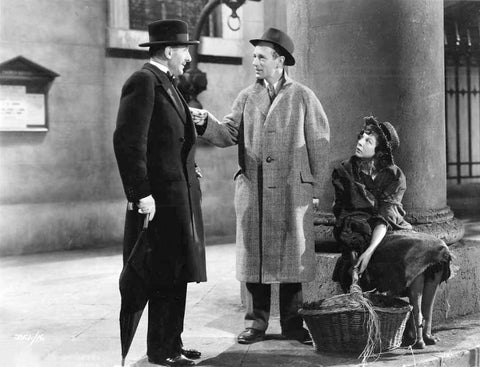
Source. Metro-Goldwyn-Mayer, Public domain, via Wikimedia Commons
Highlights of 1930s Men's Fashion
In the 1930s, men's fashion underwent a significant evolution, influenced by both the economic climate and the changing cultural landscape. The decade began amidst the throes of the Great Depression, which profoundly impacted the way people dressed.
As unemployment rates soared and financial uncertainty loomed, frugality became paramount, leading to a shift towards more practical and versatile clothing choices.
One of the most iconic staples of 1930s men's fashion was the tailored suit. Reflecting a sense of formality and professionalism, suits were a ubiquitous sight in both business professional and business casual settings and everyday life.
Jackets featured broad shoulders and a slightly draped silhouette, while trousers were high-waisted and wide-legged, exuding an air of sophistication. Earthy tones such as brown, grey, and olive were popular choices, reflecting the somber mood of the era.

Source: Macfadden Publications, Inc.; CBS Radio photo, Public domain, via Wikimedia Commons
Despite the economic hardships, men still sought to maintain a sense of style and elegance. Accessories played a crucial role in completing the look, with fedora hats, suspenders, and pocket squares adding a touch of flair to outfits.
Well-polished leather shoes were a must-have, reflecting attention to detail and refinement. Browse fun dress socks and men's ties for the modern man today.
However, it wasn't just the upper echelons of society that influenced men's fashion during this time. The rise of Hollywood and the glamorous world of cinema also played a significant role in shaping trends.
Leading men like Clark Gable and Cary Grant became style icons, with their impeccably tailored suits and debonair charm setting the standard for masculine elegance.
Several unique aspects characterized 1930s men's fashion, distinguishing it from previous decades and laying the groundwork for future trends.
One notable feature was the emphasis on streamlined silhouettes and tailored fits, which lent an air of elegance and sophistication to men's attire. Check out Nimble Made's fit guide for your perfect fit today.
Additionally, the integration of synthetic fabrics such as rayon and nylon brought about innovations in both style and comfort, offering alternatives to traditional woolen garments. The influence of Hollywood stars further propelled men's fashion, with leading actors setting new standards for masculinity and grooming.
Moreover, the adaptability of clothing to suit both formal and casual occasions reflected the practical mindset of the era, as men sought versatility in their wardrobes amidst economic uncertainty.

Source: unknown (Selznick International Pictures / United Artists), Public domain, via Wikimedia Commons
In essence, 1930s men's fashion was a reflection of the times—a blend of practicality, elegance, and resilience in the face of adversity. Despite the challenges of the Great Depression, men found solace and self-expression through their clothing, creating a legacy of timeless sophistication that continues to inspire fashion enthusiasts to this day.
Art Deco Style for Men's Fashion
Art Deco style in men's fashion of the 1920s and 1930s was a reflection of the broader cultural and artistic movement that swept through society during this period. It was characterized by a departure from the ornate and heavily adorned styles of the Victorian and Edwardian eras, embracing instead a more minimalist yet still luxurious aesthetic.
One of the key features of Art Deco fashion for men was its emphasis on geometric shapes and patterns. This was evident in the design of suits, where sharp lines and angular cuts replaced the softer, more rounded contours of previous decades.
Patterns such as chevrons, zigzags, and sunbursts were commonly used to adorn ties, scarves, and even the fabric of suits themselves, adding a sense of dynamism and modernity to men's attire. Browse Nimble Made's checkered and gingham shirts.
Additionally, Art Deco fashion for men often incorporated elements of exoticism and cultural fusion. Inspired by the discovery of ancient civilizations and the growing fascination with travel and exploration, designers integrated motifs and influences from Egypt, Asia, and Africa into their creations.
This resulted in the use of bold colors, intricate embroidery, and exotic fabrics, lending a sense of adventure and global sophistication to men's clothing.
Accessories played a crucial role in completing the Art Deco look for men, with cufflinks, tie clips or pins, and pocket squares featuring intricate designs and embellishments. Hats, such as the fedora or the Trilby, were popular choices, often adorned with contrasting bands or feathers to add a touch of flair.
Likewise, shoes were sleek and polished, with pointed toes and slender heels in keeping with the overall aesthetic of sophistication and refinement.
Overall, Art Deco style in men's fashion was about embracing modernity, luxury, and innovation while still retaining a sense of elegance and sophistication.
It captured the spirit of an era defined by rapid social and cultural change, offering men a way to express their identity and status through their clothing in a manner that was both stylish and forward-thinking.
Outfit Elements for Art Deco Men's Fashion
Art Deco men's style encompassed several distinct outfit elements, including dress shirts, that contributed to its signature look of sophistication and modernity.
- Tailored Suits: Central to Art Deco men's fashion were impeccably tailored suits featuring streamlined silhouettes, straight cuts, and narrow lapels. Suits were typically made from luxurious fabrics such as silk, velvet, or fine woolens, reflecting the opulence associated with the era.
-
Geometric Patterns: Dress shirts often featured geometric patterns or motifs, such as chevrons, zigzags, or bold stripes. These patterns added a dynamic visual element to the outfit and complemented the overall Art Deco aesthetic of sharp lines and angular shapes. One distinctive feature of Art Deco suit jackets was the incorporation of geometric patterns or embellishments. This could take the form of contrasting piping along the lapels and pockets, intricate embroidery along the cuffs or hem, or even geometric-shaped buttons.
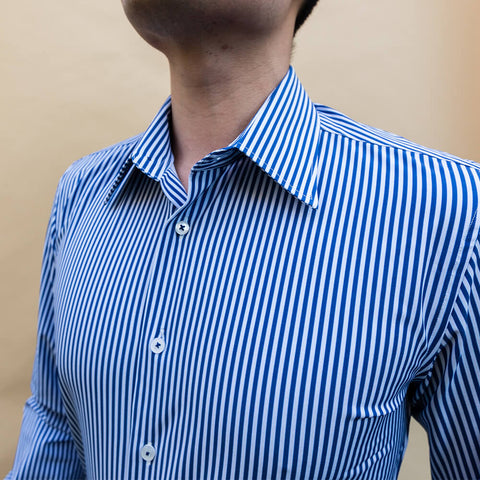
-
Contrasting Colors: Art Deco fashion embraced bold color combinations, and dress shirts were no exception. Men often wore shirts in vibrant hues such as deep blues, rich greens, or striking reds, either as solid colors or with contrasting panels and trims. Check out one of our favorites: Nimble Made's Red and Blue Checked Dress Shirt.

- French Cuffs: French cuffs, also known as double cuffs, were a hallmark of Art Deco dress shirts. These cuffs were longer than traditional barrel cuffs and folded back, often fastened with decorative cufflinks. The use of cufflinks allowed men to showcase their personal style and add a touch of elegance to their attire.
- Fine Fabrics: Dress shirts in the Art Deco era were crafted from high-quality fabrics, such as Egyptian cotton or silk, to ensure both comfort and style. These fabrics were often lightweight and breathable, making them suitable for both daytime and evening wear. Browse Nimble Made's silk pocket squares and men's ties.
Overall, Art Deco men's style combined tailored sophistication with bold design elements, resulting in a fashion aesthetic that epitomized the glamour and modernity of the era. Dress shirts and suit jackets played a crucial role in this style, with their geometric patterns, contrasting colors, and fine craftsmanship contributing to the overall elegance of the outfit.
Browse Nimble Made's slim-fit dress shirts and dress shirts for short men.
The Double-Breasted Suit
The double-breasted suit was a prominent and stylish choice for men's fashion in the 1930s. Characterized by its overlapping front flaps with two parallel columns of buttons, the double-breasted suit exuded an air of sophistication and elegance.
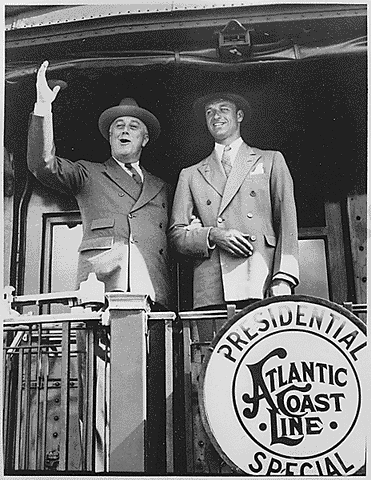
Source: "Franklin D. Roosevelt in Washington, Washington, D.C.", Public domain, via Wikimedia Commons
During this era, double-breasted suits typically featured wide, peaked lapels and a slightly boxy yet tailored silhouette, which emphasized a strong, masculine look. The jacket often had padded shoulders to create a broader frame, reflecting the popular aesthetic of the time.
Double-breasted suits were commonly made from high-quality wool fabrics in muted tones such as navy, charcoal, or pinstripes, reflecting the somber mood of the Great Depression era. However, they also occasionally featured bolder patterns or textures for those seeking a more daring style statement. Here is more on the Old Money Aesthetic.
This style of suit was versatile, suitable for both formal and semi-formal occasions. Whether worn to the office, social gatherings, or evening events, the double-breasted suit exuded confidence and sophistication, making it a timeless classic that continues to be admired and worn by modern fashion enthusiasts.
Double-Breasted vs Single-Breasted Jackets

Source: The Met Digital Collections. Artist unknown. Menswear 1930s-English, Plate 001, 1933. New York: The Met, Costume Institute Fashion Plates. Gift of Woodman Thompson.
In the 1930s, both double-breasted suits and single-breasted jackets were popular options for men's fashion, each offering a distinct style and silhouette.
Double-breasted suits featured a jacket with overlapping front flaps and two parallel columns of buttons, creating a symmetrical appearance when fastened. This style exuded a sense of formality and sophistication, often worn for more formal occasions such as business meetings or evening events.
The broad lapels and structured shoulders of double-breasted jackets added a sense of presence and authority to the wearer's look, making it a favored choice among professionals and stylish gentlemen alike.

Source: The Metropolitan Museum of Art. F. Scholte, Forster & Son, Ltd. (British). Suit, 1933. Wool, brass. New York: The Metropolitan Museum of Art, 1974.185.8a–c. Gift of the Duchess of Windsor, 1974.
On the other hand, single-breasted jackets were also prevalent in 1930s men's fashion, offering a more versatile and understated option.
These jackets featured a single row of buttons down the center, with a notch or peak lapel depending on the desired style. Single-breasted jackets were favored for their simplicity and ease of wear, suitable for both formal and casual occasions.
They provided a more relaxed and contemporary silhouette compared to double-breasted suits, making them a popular choice for everyday wear and less formal events.
Ultimately, the choice between a double-breasted suit and a single-breasted jacket in the 1930s depended on personal preference, occasion, and the desired level of formality. Both styles contributed to the diverse and dynamic fashion landscape of the era, reflecting the evolving tastes and preferences of men during this time.
Casual Wear for Men in the 1930s
Casual fashion for men in the 1930s reflected a blend of practicality, comfort, and style, influenced by the economic hardships of the Great Depression era.
While formal attire like suits remained prevalent for certain occasions, men embraced more relaxed and versatile clothing options for everyday wear.

Source: Mercury Theatre, photographer unknown, Public domain, via Wikimedia Commons
One popular casual outfit for men during the 1930s consisted of high-waisted trousers paired with button-up shirts or knit pullovers. These trousers often featured wide-legged or pleated styles, providing ease of movement and comfort for daily activities.
Shirts were typically worn tucked into the trousers and came in a variety of patterns and colors, ranging from solid hues to subtle stripes or checks.
For outdoor activities or leisure time, men often opted for casual jackets such as sports coats or windbreakers. These jackets were lightweight and practical, offering protection from the elements while still maintaining a sense of style.
Additionally, knitwear such as cardigan sweaters or V-neck pullovers were popular choices for layering over shirts, providing both warmth and a touch of sophistication.
Footwear for casual attire in the 1930s typically included leather lace-up shoes or loafers, offering both comfort and durability for everyday use. Accessories such as fedora hats, scarves, and leather belts completed the look, adding a touch of flair and personal style to casual outfits.

Source: Library of Congress, Prints & Photographs Division, FSA/OWI Collection, [reproduction number, e.g., LC-USF34-9058-C]
Working-class men's fashion in the 1930s was influenced by practicality, durability, and economic constraints, reflecting the hardships of the Great Depression. For many, clothing was utilitarian, serving primarily as protection from the elements and the rigors of manual labor.
Typically, working-class young men wore simple and sturdy garments suited to their daily tasks. This included trousers made from durable fabrics like denim or heavy cotton, often paired with button-up shirts or flannel shirts for warmth and comfort.
Overalls were also common among those engaged in manual labor, providing additional protection and ease of movement.

Source: Library of Congress, Prints & Photographs Division, FSA/OWI Collection, [reproduction number, e.g., LC-USF34-9058-C]
Footwear for working-class men consisted of practical and hard-wearing options such as leather boots or sturdy shoes, designed to withstand long hours on their feet and varied working conditions. Accessories were minimal, with practical items like hats or caps serving to shield against the sun or cold weather.
Due to limited financial resources, working-class men often repaired and reused clothing whenever possible, leading to a patchwork aesthetic and a reliance on hand-me-downs. While fashion trends were less of a priority for this demographic, individuals still sought to present themselves with a degree of dignity and respectability through their attire.
Overall, casual attire for men in the 1930s emphasized practicality and comfort while still retaining elements of style and sophistication. It reflected the resilience and adaptability of individuals during a challenging economic period, showcasing a timeless sense of fashion that continues to inspire modern menswear trends.
Formal Wear for Men in the 1930s
Formal wear for men in the 1930s reflected the era's emphasis on elegance, sophistication, and attention to detail. The quintessential formal attire during this time was the tuxedo, also known as a dinner jacket or evening suit.

Source: IMDb, Public domain, via Wikimedia Commons
Tuxedos featured a tailored jacket with satin or grosgrain lapels, typically in a shawl or peak style. Trousers were high-waisted and often had a satin stripe running along the outer seam. The shirt worn with a tuxedo was typically white and made of fine cotton or linen, with a wingtip collar and French cuffs. These are the best tuxedo shirts we found for men.
Here are guides on men's dress shirt collars and men's shirt cuff styles. Be sure to also browse Nimble Made's collared shirts.
Accessories included a black bow tie, cufflinks, and patent leather shoes, completing the polished and refined look suitable for formal occasions such as dinners, galas, and evening events. Additionally, top hats were sometimes worn as a formal accessory, adding an extra touch of sophistication to the ensemble.
In addition to the traditional tuxedo, another formal wear option for men in the 1930s was the tailcoat, often referred to as "white tie" attire. This ensemble consisted of a black tailcoat with satin peak lapels, worn over a white piqué waistcoat and a starched white shirt with a wingtip collar.
Trousers were typically black with satin stripes, completing the formal look. White gloves were sometimes worn as a finishing touch, particularly for very formal occasions.

Source: The Met Digital Collections. Artist unknown (Italian). Menswear 1930s- Italian, Plate 021, 1930s. New York: The Met, Costume Institute Fashion Plates. Gift of Woodman Thompson.
For daytime formal events, such as weddings or morning ceremonies, a slightly less formal option known as the morning suit was commonly worn.
This ensemble typically included a morning coat, which was a black or grey coat with a cutaway front, paired with striped trousers, a waistcoat, and a formal shirt and tie. Accessories such as a top hat and gloves were often included to complete the ensemble. Learn more about hat sizes.
Regardless of the specific formal wear chosen, attention to fit and tailoring was paramount in the 1930s. Suits were meticulously tailored to fit the wearer's body, with particular emphasis on clean lines and a flattering silhouette. Fabrics were of the highest quality, with wool being the most common choice for its durability and luxurious feel.
Overall, formal wear for men in the 1930s epitomized a sense of refinement, class, and sophistication. Whether donning a tuxedo for an evening affair or a morning suit for a daytime event, men embraced the opportunity to dress their best for formal occasions, leaving a lasting legacy of timeless style and elegance.
Male Fashion Icons of the 1930s
The 1930s saw the rise of several male fashion icons whose impeccable style and charisma captivated audiences around the world.
Clark Gable
Among these iconic figures was Clark Gable, whose role in the 1934 film "It Happened One Night" catapulted him to fame and cemented his status as a Hollywood heartthrob. Gable's suave demeanor and impeccable tailoring set new standards for men's fashion, inspiring countless admirers to emulate his sophisticated look.

Source: Los Angeles Daily News, CC BY 4.0, via Wikimedia Commons
Fred Astaire
Another influential figure of 1930s fashion was Fred Astaire, whose impeccable dance moves were matched only by his impeccable sense of style. Known for his elegant suits, perfectly tied bow ties, and polished shoes, Astaire epitomized timeless sophistication and charm. His influence extended beyond the silver screen, shaping men's fashion both on and off the dance floor.
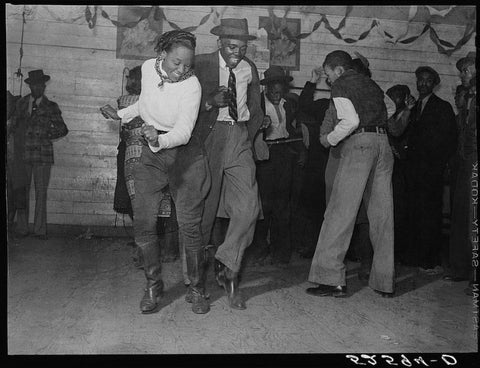
Source: Library of Congress, Prints & Photographs Division, FSA/OWI Collection, [reproduction number, e.g., LC-USF34-9058-C]
Errol Flynn
Errol Flynn, with his adventurous spirit and rugged good looks, also left a lasting impression on 1930s fashion. Whether portraying swashbuckling heroes on screen or attending glamorous events off-screen, Flynn exuded a sense of effortless cool that made him a style icon of his time.
His relaxed yet refined approach to dressing made him a role model for men seeking a blend of comfort and sophistication.
Duke of Windsor

Source: William John Oliver, Public domain, via Wikimedia Commons
Additionally, the Duke of Windsor, formerly King Edward VIII before abdicating the throne in 1936, played a significant role in shaping men's fashion during the 1930s. Known for his bold choices and love of luxury fabrics, the Duke popularized several style innovations, including the Windsor knot for neckties and the introduction of casual sports jackets into formal wear. Here is our guide on how to tie a tie.
These male fashion icons of the 1930s not only defined the era's style but also continue to influence men's fashion to this day, serving as timeless examples of elegance, charm, and sophistication.
Cultural Impact of 1930s Fashion
The fashion of the 1930s had a profound cultural impact that extended far beyond the realm of clothing, influencing societal norms, economic trends, and artistic expressions.
During the Great Depression, when economic hardship was widespread, fashion served as a means of escapism and self-expression. Despite financial constraints, individuals found creative ways to adapt and innovate within the constraints of their budgets, leading to the rise of DIY fashion and the repurposing of existing garments.

Source: National Archives at College Park, Public domain, via Wikimedia Commons
Moreover, the glamorous Hollywood films of the 1930s showcased opulent costumes and stylish attire, providing inspiration and aspiration for audiences worldwide. Stars like Greta Garbo, Joan Crawford, and Fred Astaire became fashion icons whose looks were emulated by fans eager to capture the allure of the silver screen.
Additionally, the fashion of the 1930s reflected shifting societal attitudes towards gender roles and class distinctions. Women's fashion, in particular, evolved to embrace more practical and streamlined silhouettes, reflecting the growing presence of women in the workforce and the need for functional attire.
Furthermore, the emergence of Art Deco design, with its emphasis on geometric shapes, bold colors, and modernist aesthetics, permeated all aspects of culture, including fashion. This style influenced not only clothing but also architecture, interior design, and decorative arts, leaving an indelible mark on the visual landscape of the era.
In sum, the fashion of the 1930s was not merely a matter of clothing; it was a reflection of the social, economic, and cultural forces shaping the world at that time. By examining the fashion trends of this era, we gain insight into the aspirations, values, and struggles of individuals striving to navigate the challenges of a tumultuous decade.
Conclusion to 1930s Men's Fashion
In conclusion, the fashion of the 1930s stands as a testament to resilience, creativity, and enduring style amidst a backdrop of economic turmoil and societal change. From the tailored suits of Hollywood heartthrobs to the practical attire of everyday workers, men's fashion in the 1930s captured the spirit of the era with elegance and sophistication.
The influence of iconic figures like Clark Gable and Fred Astaire, along with the emergence of Art Deco design, left an indelible mark on the cultural landscape, shaping not only clothing but also attitudes towards gender, class, and self-expression.
As we reflect on the fashion of the 1930s, we are reminded of the power of style to transcend mere aesthetics, serving as a mirror to the hopes, dreams, and challenges of a generation striving to navigate an uncertain world. Through their clothing choices, men of the 1930s forged identities, expressed individuality, and left a lasting legacy of timeless elegance that continues to inspire and influence fashion enthusiasts today.
FAQs about 1930s Mens Fashion
What was the fashion for men in the 1930s?
In the 1930s, men's fashion was characterized by sophistication and elegance, with a shift towards more streamlined and tailored silhouettes. Suits were a staple of men's attire, featuring wide shoulders, fitted waists, and wide-legged trousers.
Accessories such as fedora hats, suspenders, pocket squares, and polished leather shoes completed the polished and dapper look of the era.
Did men wear shorts in the 1930s?
In the 1930s, shorts were primarily worn by boys for casual or recreational activities rather than by men in everyday settings.
Men typically wore trousers or suits for formal occasions, and even for more casual wear, they preferred long trousers. Shorts as a mainstream fashion choice for adult men didn't become popular until later decades, particularly after World War II.
What was the 1930s style called?
The style of the 1930s is often referred to as "Art Deco." It was characterized by sleek lines, geometric shapes, bold colors, and lavish ornamentation, drawing inspiration from modern technology and the machine age.
Art Deco influenced various aspects of design, including architecture, fashion, furniture, and visual arts, and it epitomized the glamour and sophistication of the era.
What did normal people wear in the 1930s?
In the 1930s, everyday attire for men typically consisted of tailored suits with wide-legged trousers, button-up shirts, and fedora hats. Women often wore knee-length dresses or skirts paired with blouses, cardigans, or sweaters, reflecting a more feminine silhouette with defined waistlines.
Accessories such as gloves, hats, and modest jewelry were common for both genders, while practicality and durability were emphasized due to the economic hardships of the Great Depression.


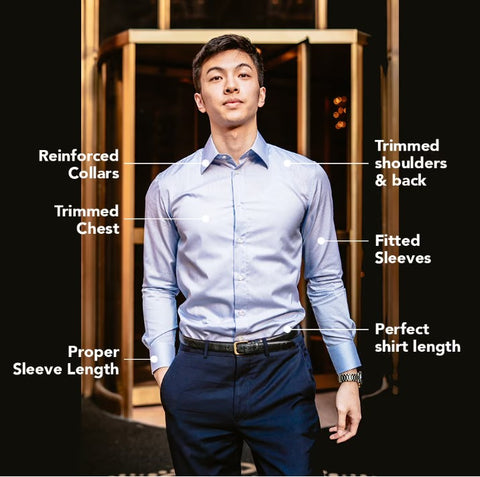





Comments (0)
Back to News